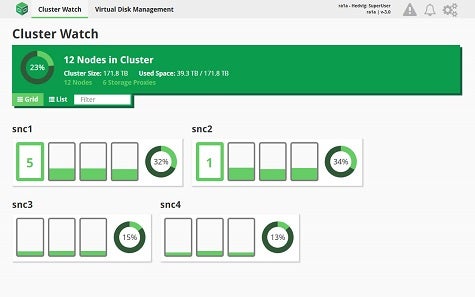Data, in theory, should always be secure and universally available. In practice, data ends up being accessible to only a handful of applications via storage systems incapable of encrypting data. To make data both inherently more secure and accessible, Hedvig has updated its Distributed Storage Platform with Encrypt360 software to enable IT organizations to encrypt […]
Data, in theory, should always be secure and universally available. In practice, data ends up being accessible to only a handful of applications via storage systems incapable of encrypting data.
To make data both inherently more secure and accessible, Hedvig has updated its Distributed Storage Platform with Encrypt360 software to enable IT organizations to encrypt data at the server before storing it. Rob Whiteley, vice president of marketing for Hedvig, says this approach means that all the data passing through its software-defined storage (SDS) platform running on that server can be encrypted on a per-volume basis.
Whiteley says that approach is not only more efficient, it also eliminates the need to depend on magnetic storage drives to encrypt all the data at rest residing on the drive.
“The data gets encrypted at the server, so it’s not only encrypted on the drive, but also as it moves between the storage system and the server,” says Whiteley.
Designed to be deployed across multiple platforms, Hedvig Distributed Storage Platform version 3.0 includes enhanced plug-ins for VMware to provide additional security, backup and data protection capabilities. In addition, Hedvig has developed a plug-in to support OpenStorage Technology (OST) developed by Veritas Technologies. Hedvig has also extended its existing support for Docker containers by having its implementation of a Hedvig Storage Proxy container certified by Red Hat. The Hedvig proxy container has also been published on the Red Hat Container Catalog. Hedvig already supports OpenStack environments, as well.
Whiteley says that as software deployed on a server, the Hedvig approach to SDS only adds about 10 percent overhead compared to running software on each local storage array. But because storage is now managed at the server level, Whiteley says IT organizations gain flexibility, better security and lower total cost of storage ownership. Because the Hedvig Distributed Storage Platform is based on a multi-tenant architecture, IT organizations have the option of deploying it on-premises or in the cloud, adds Whiteley.

With this update to the Hedvig Distributed Storage Platform, Whiteley says the company has also updated the Hedvig FlashFabric software the company developed to provide additional auto-tiering and read cache capabilities. Hedvig FlashFabric provides a mechanism to network together all-Flash arrays in a way that Whiteley says can be easily extended to support NVMe, 3D Xpoint and other flash technologies as they become available.
The battle between proponents of various approaches to SDS is already fierce. The first issue IT organizations need to contend with is where they want SDS to run. Historically, storage has been managed by controller software running on dedicated hardware. As SDS running on the server becomes a more viable option, the question IT organizations will need to consider is what level of performance tradeoff is acceptable to reduce overall storage and security management overhead.









